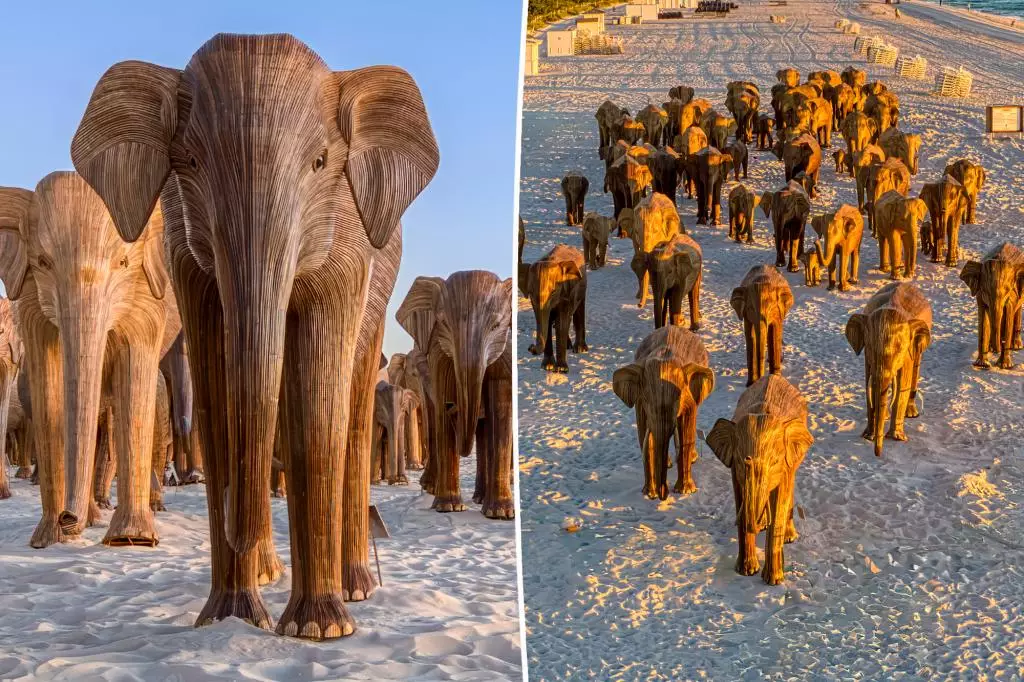As the world of high art gears up for one of its most anticipated events, Art Basel in Miami, the excitement surrounding it has evidently spilled beyond traditional expectations. While the fair is officially set to commence on December 6, the vibes are already in full swing, reflected in an unexpected incident that has caught public attention. A couple was reportedly found in a compromising position on top of an engaging outdoor art installation featuring life-sized elephant sculptures, aptly named “The Great Elephant Migration.” This peculiar tableau serves as a reminder that art, in its many forms, can evoke reactions both profound and outrageous.
The spectacle of the couple “caught in the act” raises intriguing questions about human interaction with public art. What compels individuals to see art installations not merely as visual experiences but as spaces for personal expression? This particular incident exemplifies the thin line between artistic admiration and public behavior, sparking discussions about the boundaries of decorum in artistic spaces.
The installation itself, designed to highlight themes of coexistence and the plight of elephants, comes with a backstory that merits examination. Created by a talented collective of Indian artisans known as “The Real Elephant Collective,” the elephants are crafted from Lantana camara, a repurposed invasive weed. This creative choice not only breathes new life into a problematic plant but also draws attention to environmental concerns. Each sculpture, valued at approximately $28,000, supports both artistic craftsmanship and various wildlife NGOs, enriching the narrative of the artwork with social responsibility.
Despite the couple’s unconventional use of the artwork, the installation indeed functions as a conversation starter regarding wildlife conservation and artistic interpretation. As reported, the installation boasts figures that reflect an entire elephant family, addressing both the beauty and vulnerability of these majestic animals.
Interestingly, the encounter between security and the participants illustrates a certain leniency within the custodial duties of event staff. With a security guard initially opting for understanding rather than strict enforcement, an environment of tolerance emerges. This poses questions about the balance between preserving art integrity and accommodating spontaneous interactions. The officials’ decision to upgrade security following additional disturbances, including a rapper’s attempt to film a music video, suggests that while art invites engagement, there must be limits to ensure its protection.
In a broader context, such incidents during Art Basel offer a glimpse into the dynamic and often chaotic intersection where art, culture, and human behavior collide. This festival not only showcases artworks that are intellectually stimulating but also invites varied responses, some of which challenge societal norms. The capacity for art to elicit passion—whether through admiration or outrageous acts—demonstrates its undeniable relevance in contemporary discourse.
Ultimately, every Art Basel brings forth opportunities for exploration, discussion, and sometimes, controversy. While the elephant installation serves as a crucial reminder of the artistic potential to communicate important messages, it also reveals the unpredictable nature of human engagement with art. The interplay of art and audience remains ever compelling, reinforcing the notion that creativity, in all its forms, is as much about interaction as it is about the art itself.

